Everybody's Crazy About a Sharp-Dressed Man
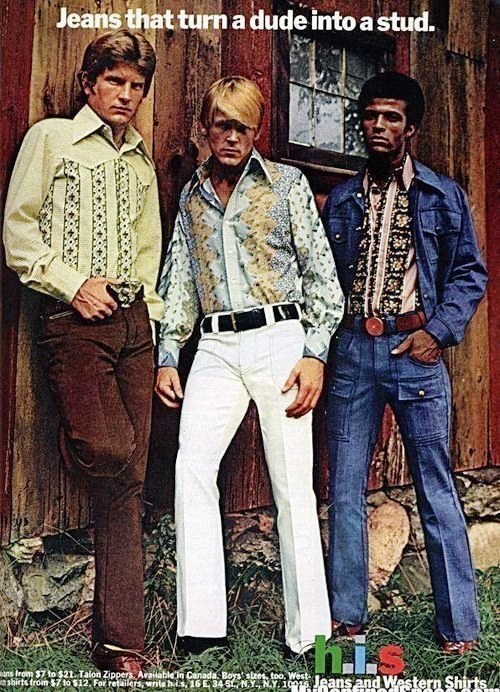
Okay, so we don't have a stampede here... dudes line up on the left and studs on the right!
Happy Valentine's Day from Boomtown America!
Hope you're spending Valentine's with someone you love like Lucy!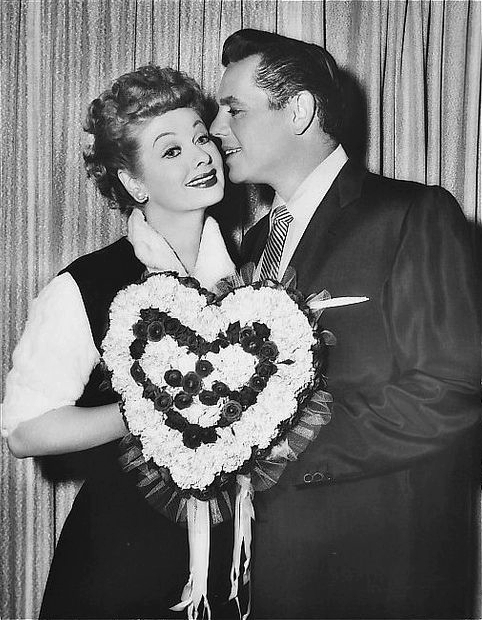
The Everly Brothers Comeback Album EB '84
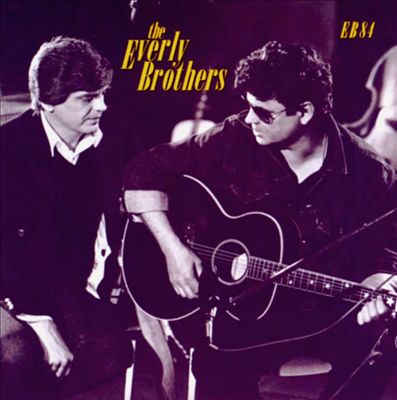 One of the Greatest Albums You May Not Have Heard Yet
One of the Greatest Albums You May Not Have Heard Yet
It had been one of the biggest and most public break-ups in rock history.
During a summer appearance at Knott’s Berry Farm in Southern California, Phil Everly smashed his guitar and stormed off-stage, leaving his brother Don to finish the set.
And that was the end of the Everly Brothers.
Or so it seemed. But in the years that followed neither of the brothers could get much of a solo career going. And they were family, after all. Tempers cooled, time passed and in 1983, after a ten-year absence, the Everly Brothers decided to reunite.
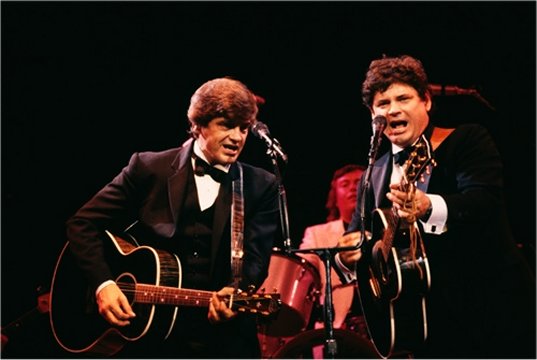 They kicked off their comeback with back-to-back concerts at the Royal Albert Hall in London, where the duo had remained popular through the years. Those two shows were then edited into a television special that played on HBO to critical raves and good ratings.
They kicked off their comeback with back-to-back concerts at the Royal Albert Hall in London, where the duo had remained popular through the years. Those two shows were then edited into a television special that played on HBO to critical raves and good ratings.
Not content to simply be an oldies act playing nothing but memories, the duo also decided to record an album of new material. The result was EB’84, an album that could stand on equal footing with anything they had recorded during their golden age.
The project was produced by Dave Edmunds (who had covered a few of the Everleys songs with frequent collaborator Nick Lowe). Some of the best and brightest in rock lined up to take part. Paul McCartney contributed the album’s first track, “On the Wings of a Nightingale.” From the opening notes, it was clear the boys had not lost a step. Released as single, the song returned the boys to pop charts on both sides of the Atlantic.
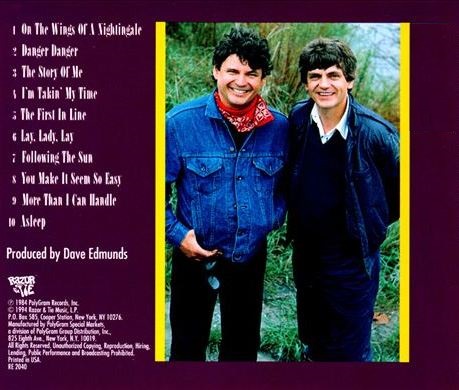 The rest of the album is classic Every Brothers. Here’s the track list with the composers:
The rest of the album is classic Every Brothers. Here’s the track list with the composers:
- “On the Wings of a Nightingale” (Paul McCartney)
- “Danger, Danger” (Frankie Miller)
- “The Story of Me” (Jeff Lynne)
- “I’m Takin’ My Time (Rick Beresford, Patrick Alger)
- “The First in Line” (Phil Kennerly)
- “Lay, Lady, Lay” (Bob Dylan)
- “Following the Sun” (Don Everly)
- “You Make It Seem So Easy” (Don Everly)
- “More Than I Can Handle” (Pete Wingfield - Mike Vernon)
- “Asleep” (Don Everly)
Musician included Dave Edmunds, Albert Lee, Jeff Lynne, Paul McCartney and Richard Tandy.
The best thing about the album is that it has the classic sound of the Everly Brothers but doesn’t feel retro or dated.
If you love Everly classics like “Wake Up Little Susie,” “Bye Bye Love” and the rest, you owe it to yourself to give this album a listen.
Ain't It the Truth: 1950's Edition
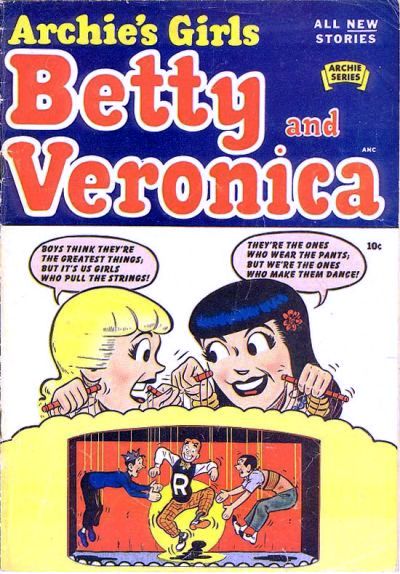
Fit Body = Fit Mind
 Modern research suggest the best way to keep your brain active and sharp is to get exercise for your body!
Modern research suggest the best way to keep your brain active and sharp is to get exercise for your body!
AARP's experts recommend:
- 150 minutes of exercise a week
- Strength training 2 or more times a week
- Lead an active lifestyle
- To stay motivated, consider exercising with a group
Doodyville Babylon?
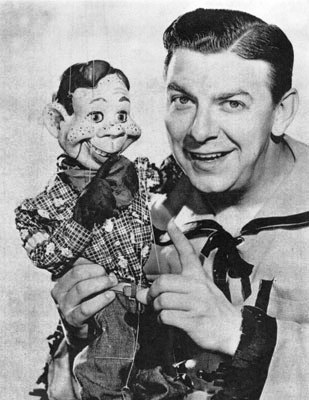 The Life & Times of Howdy Doody – Part 4
The Life & Times of Howdy Doody – Part 4
The puppets on The Howdy Doody Show were fairly easy to control. The flesh and blood actors, not so much. And it was a group of these cast members who almost brought the show to a screeching halt, resulting in the infamous 1953 “Christmas Eve Massacre” as the show was wrapping up its 5th year.
It's time once again to go behind the scenes and discover who was really pulling the strings on It's Howdy Doody Time!
When Baby Boomers reminisce about Howdy Doody, the talk usually focuses on the puppets. But most of the actual air time on the show was actually devoted to Buffalo Bob and a band of real live characters who shared the stage with the puppets, including Clarabell the clown, Chief Thunderthud, and J. Cornelius Cobb who ran the local general store.
Additionally, Dayton Allen, the voice of Mr. Bluster and Flub-a-Dub, also appeared as a variety of live characters whenever the script demanded it. In the early days, Allen portrayed the wrestler Ugly Sam, Pierre the Chef, cowboy Lanky Lou and explorer Sir Archibald, among others.
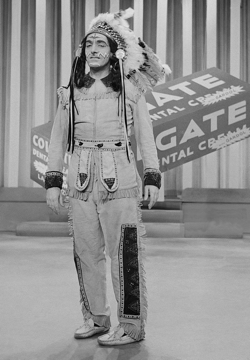 Chief Thunderthud was chief of the Ooragnak tribe (spell it backwards). Actor Bill Lecornec made a lasting contribution to pop culture when he voiced Thunderthud’s trademark greeting, “Cowabunga!” The phrase was soon adopted by California surfers, who in turn influenced the creators of the Teenage Mutant Ninja Turtles. Thanks to the Turtles, the phrase remains current today, although few under the age of 60 realize its true origins. (BTW - Bill was also seen on the show as Oil Well Willie and Doctor Singsong.)
Chief Thunderthud was chief of the Ooragnak tribe (spell it backwards). Actor Bill Lecornec made a lasting contribution to pop culture when he voiced Thunderthud’s trademark greeting, “Cowabunga!” The phrase was soon adopted by California surfers, who in turn influenced the creators of the Teenage Mutant Ninja Turtles. Thanks to the Turtles, the phrase remains current today, although few under the age of 60 realize its true origins. (BTW - Bill was also seen on the show as Oil Well Willie and Doctor Singsong.)
Robert “Nick” Nicholson played the irascible shopkeeper Corny Cobb and other occasional visitors to Doodyville.
But, next to Buffalo Bob, the biggest of the human stars was undoubtedly Clarabell. He never spoke, instead honking one of two horns attached to a box on his waist. One horn was labeled “Yes” and the other “No.” His whole purpose in life seemed to be to squirt seltzer in Buffalo Bob’s face, to the delighted squeals of the Peanut Gallery. (Today, we’d wonder if he had OCD.)
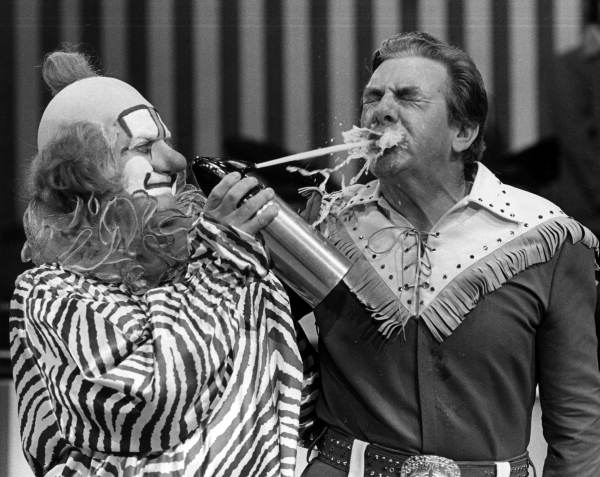 Clarabell was initially portrayed by a young Bob Keeshan. As the show’s popularity skyrocketed, Keeshan received a nice raise, but wanted still more money. NBC disagreed and replaced him with a jazz musician named Lew Anderson, who stayed with the show through the rest of its run. Don’t feel badly for Keeshan. CBS hired him, installed him in the Treasure House and as Captain Kangaroo, his television career lasted far longer than Howdy’s.
Clarabell was initially portrayed by a young Bob Keeshan. As the show’s popularity skyrocketed, Keeshan received a nice raise, but wanted still more money. NBC disagreed and replaced him with a jazz musician named Lew Anderson, who stayed with the show through the rest of its run. Don’t feel badly for Keeshan. CBS hired him, installed him in the Treasure House and as Captain Kangaroo, his television career lasted far longer than Howdy’s.
Joining Keeshan in his demand for higher salary were puppeteer Rhoda Mann (who operated Howdy), Dayton Allen, and Bill Lecornec. They all retained the same agent and made a united “take it or leave it” demand. Bob Smith and the show’s other producers decided to leave it.
But not before calling the show’s entire cast and crew together on December 23, 1953. Bob Smith told everyone exactly what kind of raise the four had asked for, asked them to correct him if he was wrong (they didn’t), and then announced that the show was accepting their resignations immediately. Word spread quickly through the New York broadcasting community about what came to be known as “The Christmas Eve Massacre.”
While the show was able to find replacements for Keeshan, Mann, and Allen, they simply couldn’t find anyone suitable to replace Lecornec. Not only was he unmistakably Chief Thunderthud, he also provided the distinctive voice of Dilly Dally, Howdy’s best bud. So after a few weeks, Buffalo Bob called up Lecornec, mended fences and brought him back to Doodyville (complete with a nice raise). Lecornec stayed with Howdy Doody for the rest of its run, also serving as the show’s general announcer.
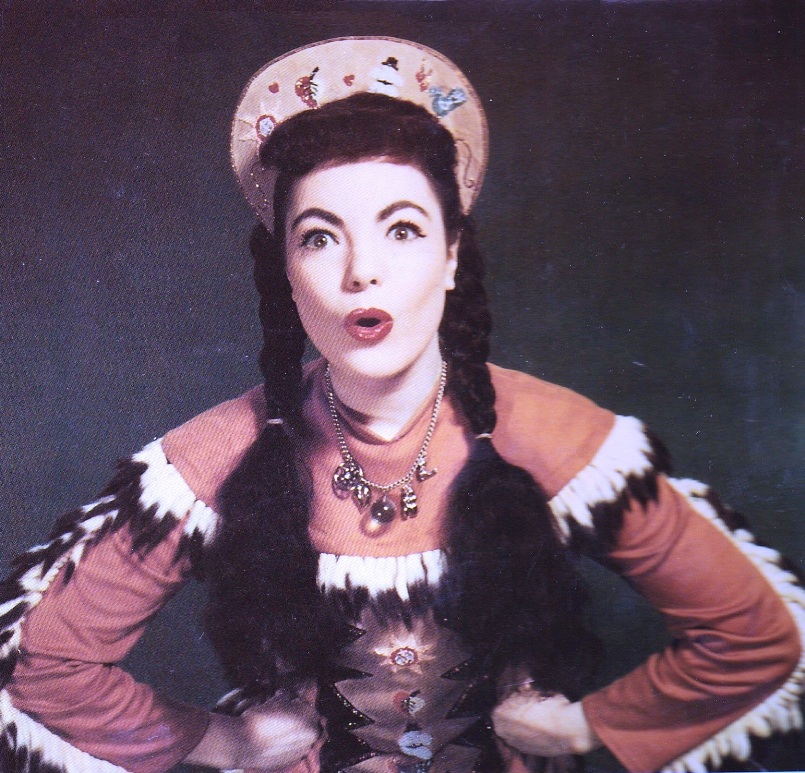 Far and away, the most beloved of the live characters was Princess Summerfall Winterspring, portrayed by the beautiful Judy Tyler. Judy went on to co-star with Elvis Presley in Jailhouse Rock. It looked like she had a great career ahead of her. Sadly, Judy and her husband died in a car accident in 1957 while returning to New York following the completion of the Elvis film.
Far and away, the most beloved of the live characters was Princess Summerfall Winterspring, portrayed by the beautiful Judy Tyler. Judy went on to co-star with Elvis Presley in Jailhouse Rock. It looked like she had a great career ahead of her. Sadly, Judy and her husband died in a car accident in 1957 while returning to New York following the completion of the Elvis film.
The show wasn’t destined to last much longer. As television audiences and production values grew increasingly more sophisticated, Howdy Doody was starting to look a little dated. Having had a good long run (nearly 13 years, much of it 5-days-a-week), Howdy was nearing retirement. The final telecast was on September 24, 1960 and NBC gave the cast and crew an entire hour to say goodbye.
Of course, most of us remember the special surprise they had for us on that last show, when Clarabell admitted that he really could talk! As time ran out, the camera dollied in for a close-up on Clarabell. With a tear streaming down his cheek, he spoke for the first and last time as he said, “Goodbye kids!”
But it wasn’t really the end for Buffalo Bob, Clarabell or Howdy. We’ll have more on that in our next installment.
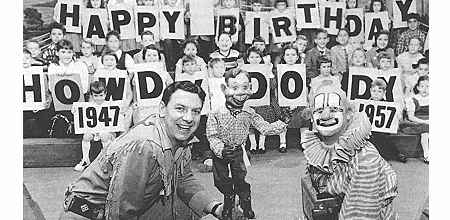
Now Playing at the Boomtown Drive-In!
Wouldn't one think that filth and sweat would enhance primitive cravings? (Asking for a friend.)

Before They Were Stars
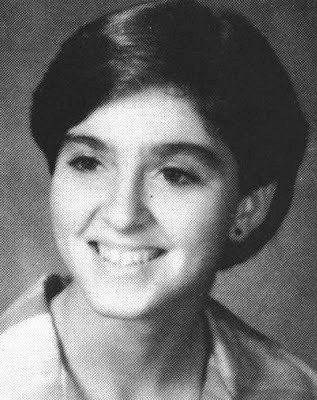
Even the biggest of American pop stars were nerdy teenagers at one time and had to pose for yearbook photos.
And so this is what Madonna looked like in her pre-Material Girl days.
Swearing May Be Good for You, We Swear It's True!
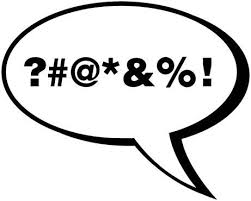 Letting loose with a blast of foul language may have some benefits.
Letting loose with a blast of foul language may have some benefits.
Researchers at Marist College in New York and the Massachusetts College of Liberal Arts determined that people swear profusely also tend to have a wider vocabulary than average.
Another study at England's Keele University found that swearing can help reduce stress and can also help endure physical pain.
Who Remembers Francis the Talking Mule?
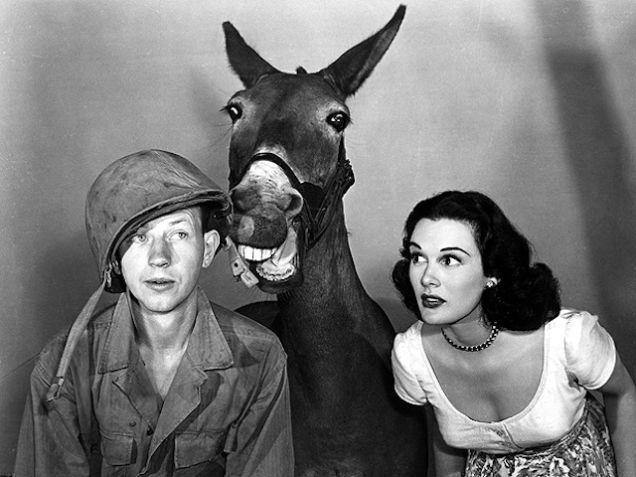 Every Baby Boomer remembers Mister Ed, the talking horse who caused trouble for his owner Wilbur Post. But Ed was actually a rip-off, a cheap TV imitation!
Every Baby Boomer remembers Mister Ed, the talking horse who caused trouble for his owner Wilbur Post. But Ed was actually a rip-off, a cheap TV imitation!
Before Ed ever opened his mouth there was Francis the Talking Mule!
Frances was created by U.S. Army Captain David Stern III. He was in charge of an Army newspaper during WWII. Bored by a lack of news one afternoon, Stern wrote four pages of fanciful dialogue between a U.S. solider and a stubborn Army mule. Intrigued, he expanded the idea into a series of short stories that were subsequently published by Esquire magazine. Stern wrote the stories in the first person and adopted as a pen name, Peter Stirling, the 2nd lieutenant who Francis befriended in the stories.
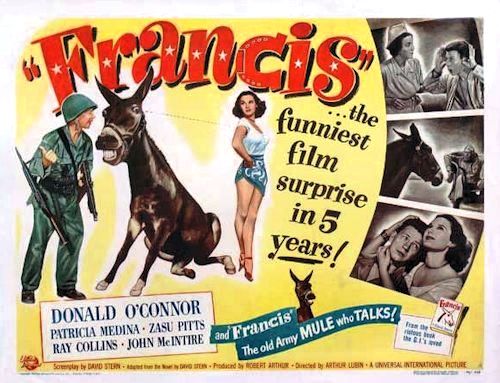 After the war, Stern adapted three of them into a Francis novel. Universal Pictures bought the film rights. In 1950, Francis (no, “the Talking Mule” was not a part of the title) debuted in movie theaters and became a solid money maker for the studio.
After the war, Stern adapted three of them into a Francis novel. Universal Pictures bought the film rights. In 1950, Francis (no, “the Talking Mule” was not a part of the title) debuted in movie theaters and became a solid money maker for the studio.
The first film set the formula for the series. Legendary song and dance man, Donald O’Connor played Peter Stirling. Veteran cowboy actor, Chill Wills (uncredited) provided Francis’ voice. Initially in each picture, Francis would only talk to Stirling. Stirling would take advice from Francis, complications would arise, hilarity would ensure, only to resolve itself when Francis would finally speak in front of others. Closing credits. Fade out. At the start of the next picture, the world would conveniently forget there was ever a talking mule and the cycle would repeat itself.
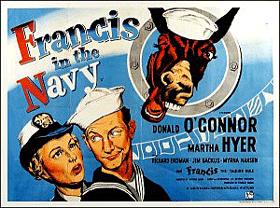 The initial Frances film spawned 6 sequels:
The initial Frances film spawned 6 sequels:
- Francis Goes to the Races (1951)
- Francis Goes to West Point (1952)
- Francis Covers the Big Town (1953)
- Francis Joins the WACS (1954)
- Francis in the Navy (1955)
- Francis in the Haunted House (1956)
Stern actually wrote a sequel to his first Francis novel called Francis Goes to Washington, but for reasons long forgotten, that novel was never adapted into a movie.
O’Connor and Willis left the series after Francis in the Navy with Mickey Rooney and Paul Frees assuming their roles. Most agree that Francis and the Haunted House was the weakest of the series.
Francis was actually played by a female mule named Molly, who got the part because she was easy to train and had a very gentle personality.
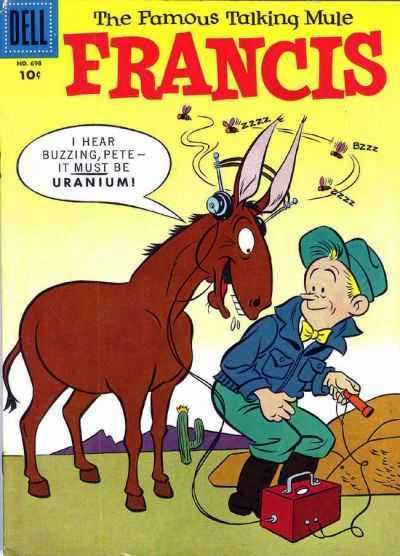 The Francis series was popular enough to spawn a bit of merchandise including a Dell comic book that ran for 17 issues.
The Francis series was popular enough to spawn a bit of merchandise including a Dell comic book that ran for 17 issues.
After the series ran out of gas in movie theaters, the director Arthur Lubin and trainer Les Hilton wanted to bring Francis to TV. When they found they couldn’t secure the rights, they discovered another series of books about a talking animal. Those rights Lubin was able to purchase. The character in those books was a talking horse named “Mister Ed.”
And the rest in television history!
All 7 Francis films are available on home video. While not on the level of, say, Abbott & Costello’s best, they are serviceable little comedies made in a time when talking out of an ass was not such a bad thing!
-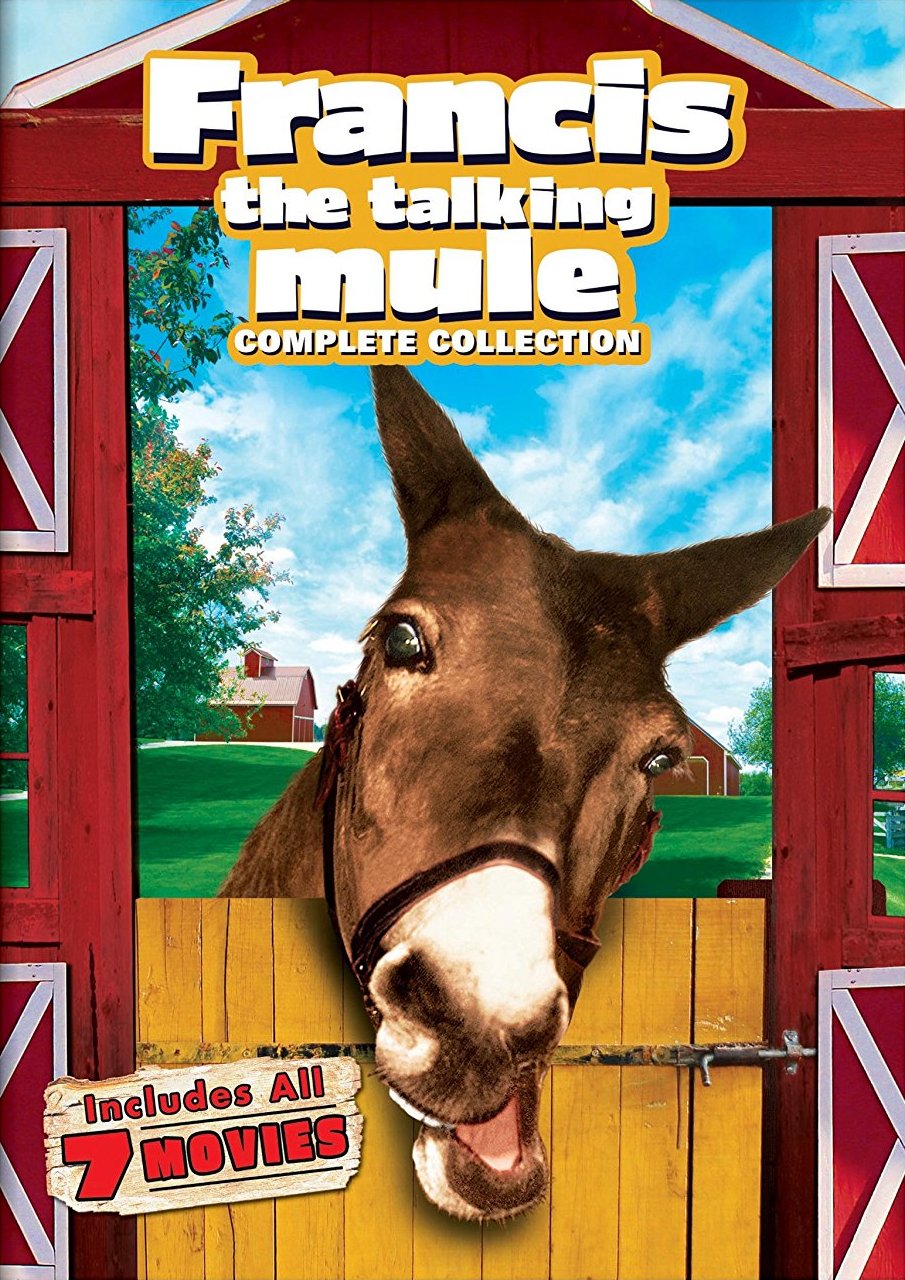
Pop Up Player
Latest Posts–Music
-
Superstars of the 60s: Dave Clark Five
Almost forgotten now, the Dave Clark Five were at one time considered to be the band that would dethrone the Beatles as the Baby Boomers’ favorite. How could that be? Before we answer that question,…
-
Revenge of the One-Hit Wonders: "Angle of the Morning" by Merilee Rush
The True Stories Behind Rock’s “1-and-Done” Classics “Angel of the Morning” (1968) As is often the case with 1-Hit Wonders, the composer and producers of “Angel of the Morning” actually had long, successful careers, even…
-
Who's on First? Jeff Lynne's ELO!
Two relatively new CDs may be of interest to Baby Boomers. They are both 2-disc live recordings. The first is a bit of a time capsule. The second is a more recent recording capturing one…
-
The Story Behind the Song - "Landslide"
Stevie Nicks’ song “Landslide,” recorded by Fleetwood Mac, has been a fan favorite since it appeared on the band’s breakthrough album in 1975. But it had been written two years before. The first (and only)…
-
Performing Nitely at the Saints & Sinners Cocktail Lounge...
Girls, don't all rush them at once......
-
Happy Birthday, Disney World
It was 54 years ago this week (October 1st) that Florida gained the attraction that has now come to define the state as Walt Disney World opened for the first time.Initially, just one theme park…


